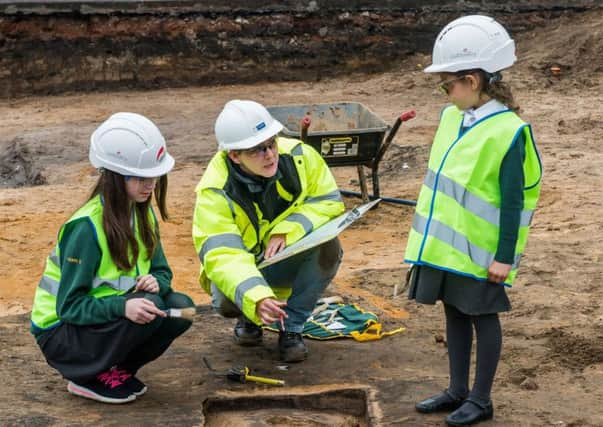Funeral to honour plague victims discovered below Leith school


Archaeologists have revealed that the remains of 79 victims, including at least 23 children, were found during building work in the grounds of St Mary’s RC Primary in Leith two years ago.
They were discovered in mass burial pits hastily dug on Leith Links as half the local population was wiped out by the 1645 outbreak. Experts say the location of the makeshift cemetery, where the victims were buried in coffins or shrouds, was previously unknown in Leith, where nearly 3000 lives were claimed.
Advertisement
Hide AdAdvertisement
Hide AdThe site would later became home to a smallpox hospital in the late 19th century, before the primary school opened in the 1930s. Pupils and staff are expected to take part in a private ceremony next month at Rosebank Cemetery.
An extensive research project was triggered over the Easter holidays in 2016 during a pre-planned excavation on the proposed site of new classrooms. They were delayed to allow more detailed examination of the site to be carried out by the council and archaeologists Wardell Armstrong.
Coins recovered from the site have helped link the remains to the outbreak as some of them were found to have been minted just eight years before.
Wardell Armstrong’s official report states: “One of the most intriguing aspects of the burials were the finds associated with the internments. The recovery of artefacts indicates the dead were buried fully clothed with personal items about their bodies and money.
Advertisement
Hide AdAdvertisement
Hide Ad“That not inconsiderable sums were in the purses of two individuals suggests that the bodies were not rifled, indicating either an unusual level of honesty and respect on behalf of those doing the burying or fear of the diseased corpse.
“That money had not been removed by others and that some of the corpses appear to have been fully clothed may suggest some of the victims died suddenly and perhaps outside the domestic environment, rather than experiencing a lingering death at home.”
John Lawson, the council’s archaeologist, said: “Analysis of the remains has helped us to understand life in Leith at this time and shed light on the devastating plague which wiped out over half of its population. These discoveries have helped us establish where this plague cemetery was – as until now its location had been lost, with only 19th century accounts hinting at its location.”
Council culture leader Donald Wilson said: “Edinburgh never fails to amaze and bring new discoveries. There is almost as much history to be found under the city as above ground. When these remains were unearthed, the discovery provided the school with a fascinating teaching resource.
Advertisement
Hide AdAdvertisement
Hide Ad“The findings have also added to our archaeological understanding of Leith, and the whole community has been very engaged in the excavation. We’re looking forward to arranging a proper burial and lasting memorial to ensure they aren’t forgotten.”